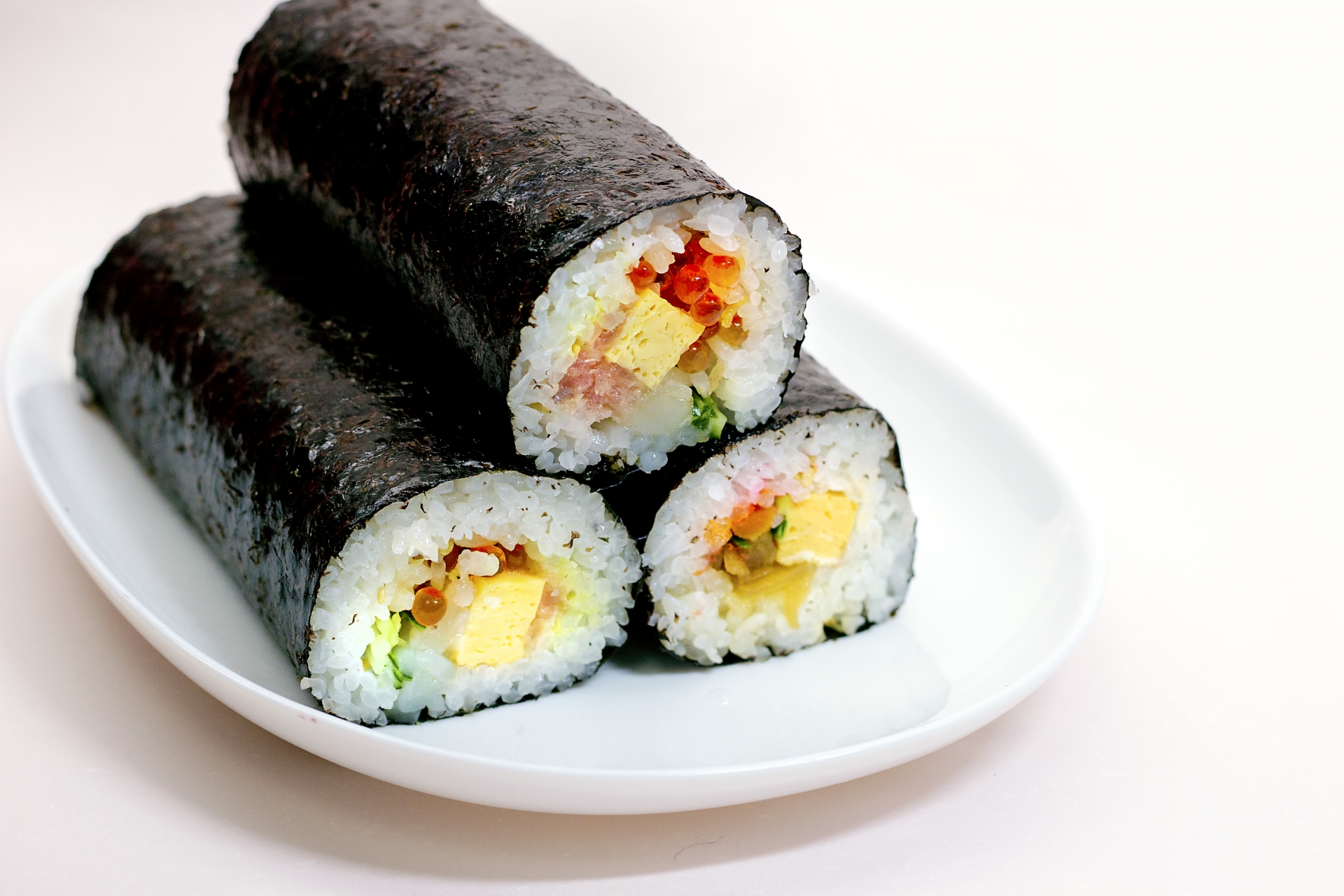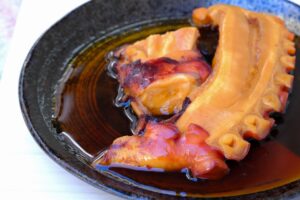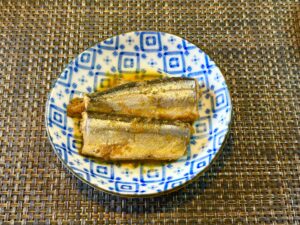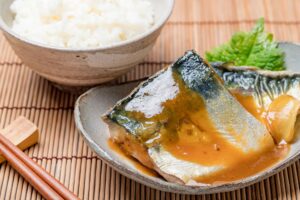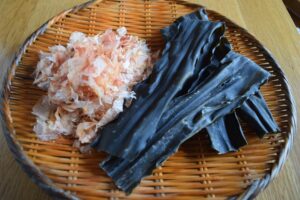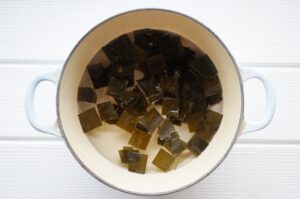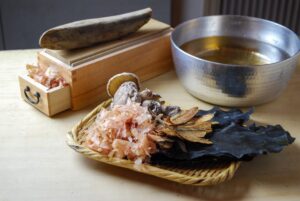Futomaki, or “thick roll” sushi, is a popular and colorful type of sushi originating in Japan. Known for its large size and variety of fillings, futomaki offers a unique experience that sets it apart from more familiar sushi styles like hosomaki or nigiri. In this article, we’ll explore what futomaki is, its traditional ingredients, how it’s made, and its role in Japanese culture—especially during seasonal events like Setsubun. Whether you’re a sushi lover or a curious home cook, this guide will provide everything you need to know.
What is Futomaki?
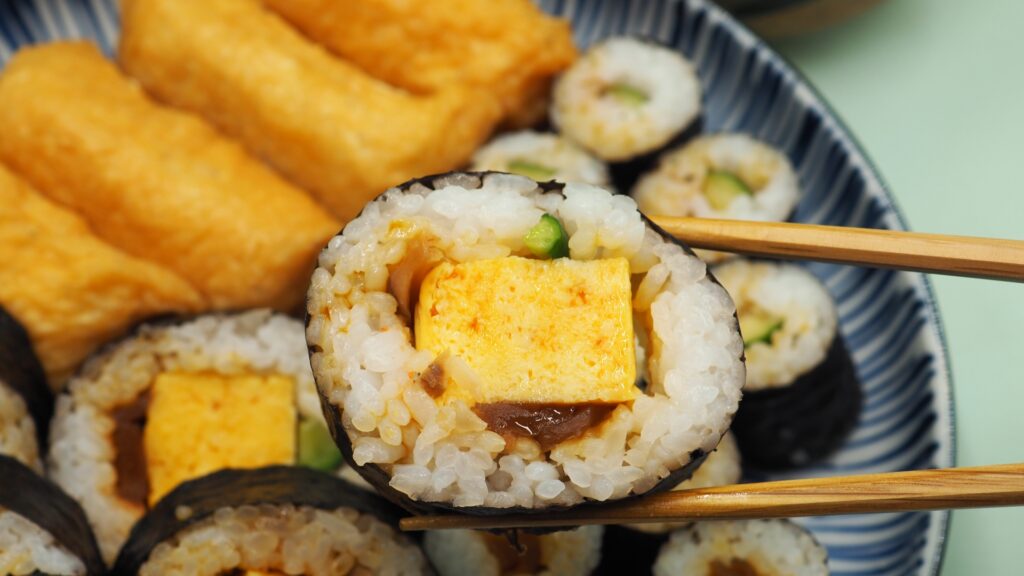
Futomaki (太巻き), meaning “thick roll” in Japanese, is a traditional type of rolled sushi that stands out for its size and vibrant fillings. The term comes from “futo” (thick) and “maki” (roll), and it’s typically made with vinegared rice (sushi-meshi) wrapped in a sheet of nori (seaweed) and filled with an assortment of ingredients. Unlike thinner sushi rolls like hosomaki, futomaki usually contains multiple fillings, both for flavor and visual appeal.
Originating from Japan, futomaki has long been a staple of home cooking and celebratory feasts, especially during festivals. It is often made in large batches for family gatherings or special occasions like Setsubun, a traditional holiday that marks the beginning of spring. The colorful cross-section of futomaki is not just delicious but also represents harmony and good fortune.
Futomaki is typically vegetarian or includes cooked ingredients, making it an approachable option for sushi newcomers. Each slice showcases a mosaic of tastes and textures—sweet tamagoyaki (Japanese omelet), earthy shiitake mushrooms, crunchy cucumber, and more—all rolled into one. It’s not just a dish; it’s a celebration of Japanese aesthetics and balance.
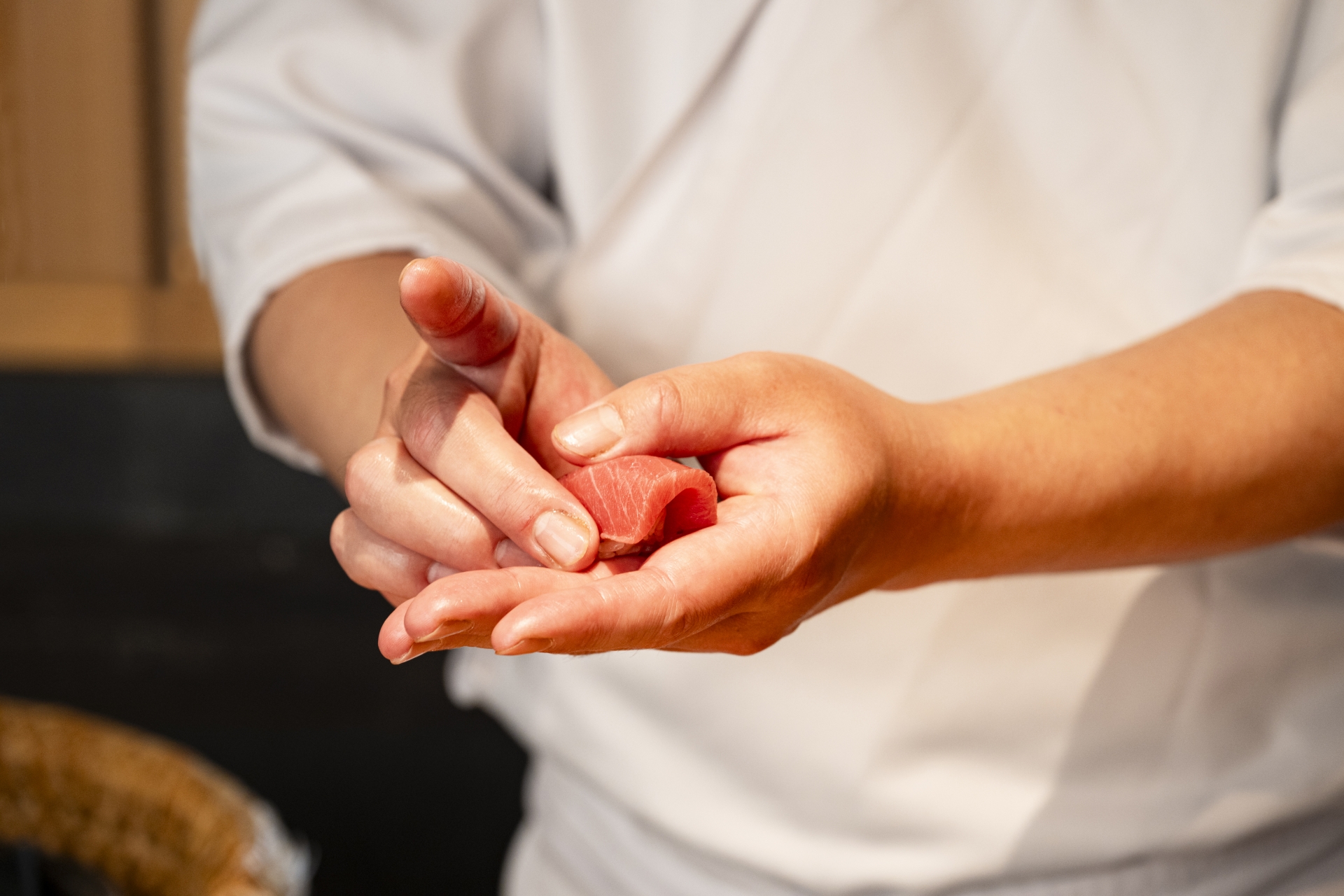

Traditional Ingredients in Futomaki
Futomaki is defined by its variety of colorful and flavorful fillings. Traditional ingredients often include a balance of sweet, savory, and umami flavors, with contrasting textures. Here are some of the most common components:
- Tamagoyaki: A sweet rolled omelet that adds a soft, fluffy texture.
- Kampyo: Dried gourd strips simmered in sweet soy sauce, providing chewiness and a hint of sweetness.
- Cucumber: Fresh and crisp, it balances richer flavors.
- Shiitake Mushrooms: Often simmered in a sweet-salty broth, adding deep umami.
- Sakura Denbu: Sweet, pink-colored fish flakes that give visual and taste contrast.
- Kanpyo or Takuan (Pickled Daikon Radish): Adds crunch and a touch of tanginess.
- Cooked seafood: Such as boiled shrimp or imitation crab (kanikama), often included in modern versions.
Regional variations exist across Japan. For instance, some versions include eel or mackerel, while others are strictly vegetarian, especially for Buddhist households. The use of colorful ingredients is intentional—it is believed that a good futomaki should have five or more colors, symbolizing good luck and balanced nutrition.

How is Futomaki Made?
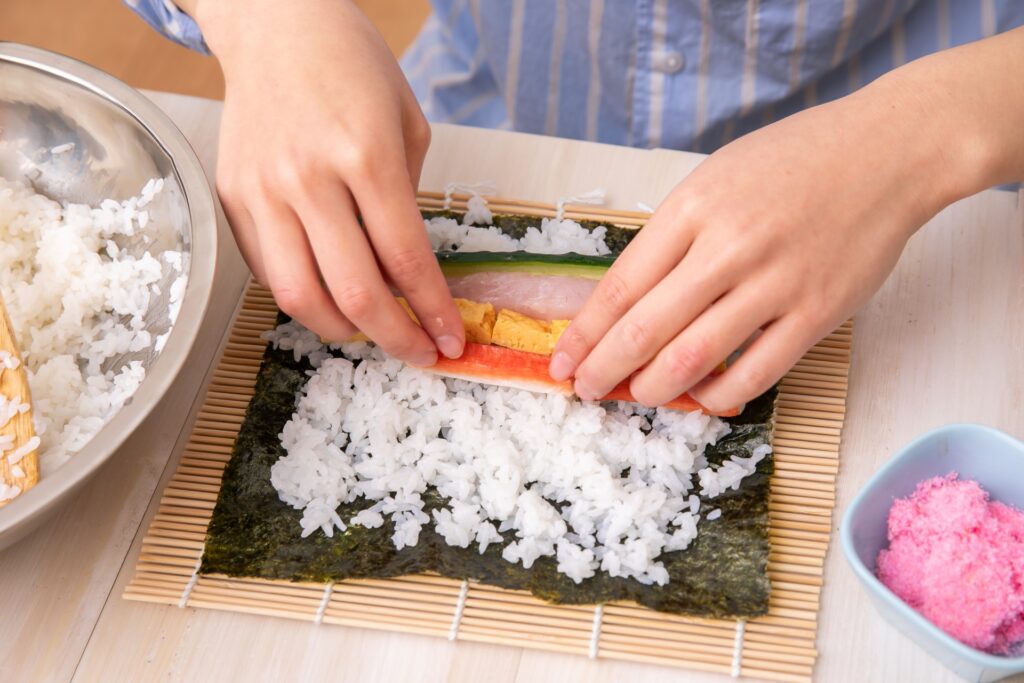
Making futomaki at home is a rewarding experience that combines precision and creativity. Here are the basic steps:
- Prepare the Sushi Rice:
- Cook Japanese short-grain rice and season it with a mixture of rice vinegar, sugar, and salt while it’s still warm.
- Let it cool to room temperature before using.
- Prepare the Fillings:
- Cook or slice each ingredient in advance.
- Ensure fillings are dry and cut into long, thin strips to allow for even rolling.
- Lay Out the Nori:
- Place a sheet of nori (shiny side down) on a bamboo sushi mat (makisu).
- Spread the Rice:
- With wet hands, spread a thin, even layer of sushi rice over the nori, leaving a 1-inch border at the top.
- Arrange the Fillings:
- Lay out your selected ingredients horizontally along the center.
- Roll the Sushi:
- Using the bamboo mat, gently but firmly roll the sushi from the bottom, keeping the fillings in place.
- Press gently to shape and seal.
- Slice the Roll:
- Use a very sharp, wet knife to cut the roll into 6 to 8 even slices.
Tools You Need to Make Futomaki at Home
To make futomaki successfully, having the right tools is essential:
- Makisu (Bamboo Rolling Mat): Used to roll the sushi tightly and evenly.
- Rice Paddle (Shamoji): Ideal for mixing and spreading rice without smashing the grains.
- Sharp Knife: A non-serrated knife helps achieve clean slices.
- Cling Wrap (Optional): Useful for shaping and keeping rolls tight, especially for beginners.
Investing in these tools makes the rolling process easier and more enjoyable, especially for first-timers.
Futomaki vs Other Types of Sushi
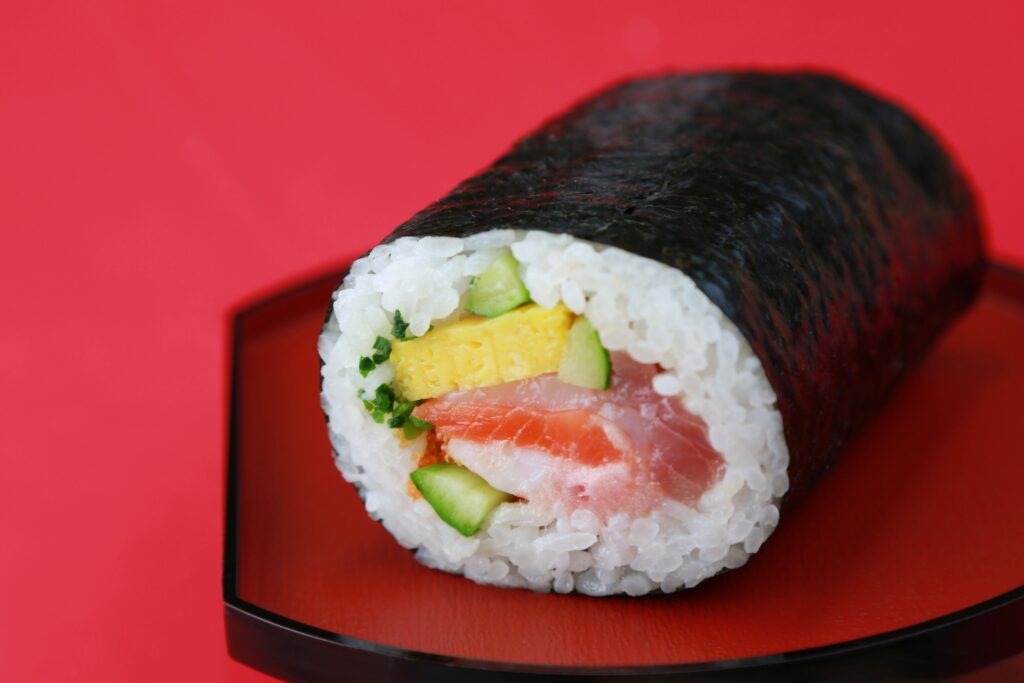
Sushi comes in many forms, and understanding how futomaki differs helps clarify its uniqueness:
| Type | Description | Typical Size | Fillings | Appearance |
| Futomaki | Thick roll with multiple ingredients | Large (5-6 cm dia) | Cooked/vegetarian | Colorful cross-section |
| Hosomaki | Thin roll with single filling | Small (2-3 cm dia) | Tuna, cucumber, etc | Minimalistic |
| Uramaki | Inside-out roll (rice outside) | Medium | Often includes mayo | Decorated with toppings |
| Temaki | Hand-rolled cone shape | Single-serving | Varies | Cone-like shape |
| Nigiri | Rice ball topped with fish or other items | Bite-sized | Raw or cooked fish | Topped, not rolled |
Futomaki vs Ehomaki
Ehomaki is a special seasonal variation of futomaki eaten during Setsubun, the Japanese holiday that marks the end of winter. The tradition involves eating one uncut futomaki roll in silence while facing a lucky direction (determined annually by the zodiac).
Unlike regular futomaki, ehomaki is never sliced, symbolizing uninterrupted good fortune. Fillings are usually auspicious, including seven ingredients representing the Seven Lucky Gods (Shichifukujin). This ritual has gained popularity throughout Japan and is now even promoted by supermarkets and convenience stores every February.
Cultural Significance of Futomaki in Japan
Futomaki is more than just food; it carries cultural and symbolic meaning. Traditionally served during family gatherings, temple festivals, and school events, its visual richness and variety represent unity and celebration.
In particular, futomaki symbolizes abundance and good luck. The deliberate inclusion of several colors and flavors in one roll is a nod to balance and harmony—core principles of Japanese aesthetics and philosophy.
During Setsubun, futomaki (in the form of ehomaki) takes on a spiritual role, believed to ward off evil spirits and invite prosperity. Beyond Setsubun, futomaki is also a staple of bento boxes and matsuri (festival) foods, signifying its role in everyday joy as well as ritual importance.
Modern Interpretations and Global Influence
As sushi has traveled around the world, futomaki has been adapted in various creative ways. In the United States, you can find futomaki rolls filled with ingredients like cream cheese, avocado, smoked salmon, or spicy mayo, reflecting local tastes.
Vegetarian and vegan versions are also growing in popularity, using ingredients like tofu, avocado, carrots, and pickled radish. In upscale restaurants and casual sushi chains alike, futomaki is often presented as a colorful, Instagram-worthy dish.
Fusion futomaki reflects both the creativity of chefs and the adaptability of Japanese cuisine. Though purists may prefer traditional ingredients, the global evolution of futomaki underscores its versatility and cross-cultural appeal.
How to Enjoy and Serve Futomaki
Serving futomaki is as much about presentation as it is about flavor. Sliced pieces should be arranged with cut sides up to showcase their colorful fillings. Accompany with traditional condiments:
- Soy Sauce: For dipping, but in moderation to avoid overpowering the delicate flavors.
- Wasabi: Optional, as futomaki usually contains cooked items.
- Pickled Ginger (Gari): Cleanses the palate between bites.
For drinks, futomaki pairs well with green tea (especially genmaicha or sencha) or light sake. These beverages enhance the umami without overwhelming the palate.
Etiquette-wise, it’s perfectly fine to eat futomaki with hands or chopsticks. One roll is typically cut into 6-8 pieces, making it ideal for sharing. If you’re enjoying ehomaki during Setsubun, remember to eat it uncut and in silence while facing the lucky direction!
Conclusion: Embrace the Art of Futomaki
Futomaki is more than just a thick sushi roll—it’s a vibrant, flavorful reflection of Japan’s culinary tradition. With its wide variety of colorful fillings, symbolic presentation, and ties to seasonal celebrations like Setsubun, futomaki showcases the artistry and meaning behind Japanese cuisine. Whether you’re preparing it at home or enjoying it at a sushi restaurant, futomaki offers a delicious way to experience culture, creativity, and community in every bite. Don’t hesitate to explore this iconic dish—you might find that the heart of sushi lies in its boldest roll.

